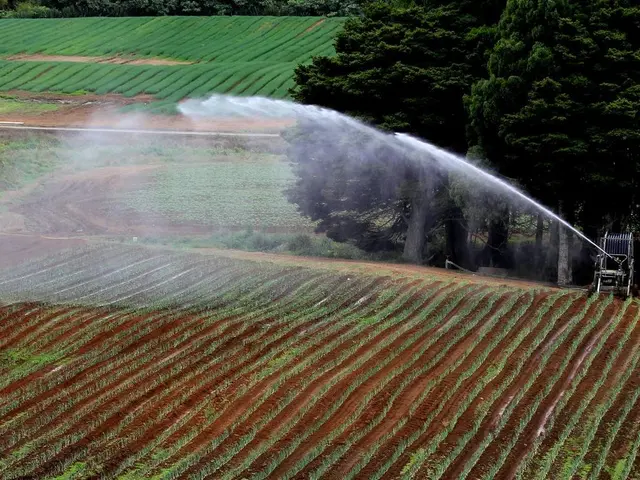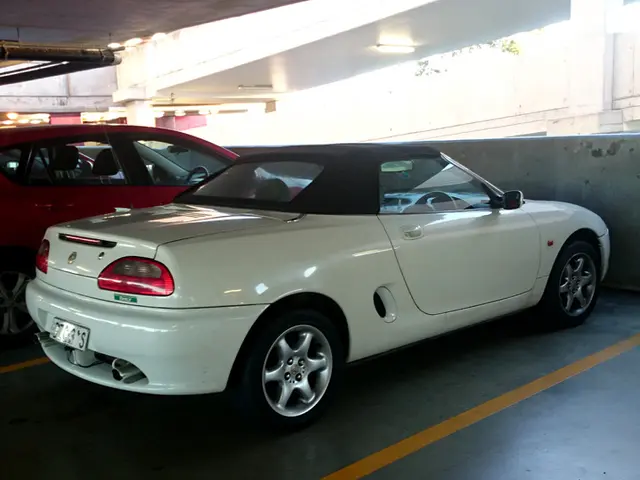EU-Wide Industrial Pollution Decrease: An Examination of the Journey from Seville to Warsaw
Air Purification Drive: Europe's Push for a Greener and Healthier Industry
- Cyril Fourneris Facebook Twitter Flipboard Send Reddit Linkedin Messenger Telegram VK Bluesky Threads Whatsapp
Europe's industry has witnessed a significant reduction in harmful pollutants emissions since 2007, according to data from the European Environment Agency. The continent now aims to take this progress a step further towards a cleaner, healthier, and more competitive industrial sector.
The 50,000 largest installations in the EU still account for around 40% of greenhouse gas emissions and are responsible for 20% of all air and water pollutants. These pollutants pose a significant threat to human health and the environment, causing illness, death, and harm to crops, wildlife, and humans.
Pollution caused by industrial emissions results in billions of euros in costs and hundreds of thousands of premature deaths in the EU each year. However, the European Environment Agency reports that the environmental and health costs of European industry have decreased by a third from 2012 to 2021, with the EU energy sector being responsible for approximately 80% of the total decrease. This is mainly due to the adoption of new techniques and the shift towards renewables and cleaner fuels, both changes being primarily the result of EU action.
The European Union recently revised its Industrial Emissions Directive (IED 2.0), its primary tool for combating pollution from the continent's largest factories and farms. Under this directive, installations must comply with environmental performance standards associated with the best available techniques (BAT) in their sector. A growing number of governments worldwide are now seeking to adopt the same approach.
The performances are decided during the 'Sevilla process', a collaborative governance model involving industry, EU member states, and civil society, which takes place at the Joint European Research Centre (JRC) in Seville. Currently, around 80% of industrial sites comply with the highest permitted emission limit values. Under the IED 2.0 directive, competent authorities in member states will be required to use more stringent values when revising or establishing permits.
Best Available Techniques (BAT) are now set to take into account human health and climate protection more explicitly. The new rules aim to achieve a further 40% reduction in the main atmospheric pollutants by 2050. A key objective is to maintain the observed trend in recent decades: EU industry has grown while reducing its impact on the environment, a process known as 'decoupling'.
The revised directive also supports innovation and guides investment to boost Europe's green competitiveness on the basis of the Clean Industrial Deal recently presented by the European Commission. In Seville, a new Innovation Centre for Industrial Transformation and Emissions (INCITE) has been established to identify and characterize the most promising technologies for achieving circular economy and carbon neutrality.
The European Union's objectives include reaching carbon neutrality and zero pollution by 2050. A new portal allows tracking changes in the levels of various pollutants in different European regions. The European Environment Agency considers that the EU has completed or advanced the implementation of the 33 actions announced in the 2021 'zero pollution' action plan, but that further efforts are still needed to achieve the objectives.
In pursuit of a greener and more sustainable industry, the EU is implementing several key strategies and new rules, including the Clean Industrial Deal, the Industrial Decarbonisation Accelerator Act, the Circular Economy Act, the revised Industrial Emissions Directive, and CO2 Target Flexibility. These strategies are integral to the EU's broader commitment to achieving net-zero emissions by 2050 and ensuring a sustainable, competitive industrial sector.
- Sources: [1] Euractiv [2] European Commission [3] Carbon Brief [4] Clean Energy Wire [5] European Environment Agency
- The European Environment Agency reports that the environmental and health costs of European industry have decreased by a third from 2012 to 2021, primarily due to EU action and the shift towards renewables and cleaner fuels.
- Under the revised Industrial Emissions Directive (IED 2.0), installations must comply with environmental performance standards associated with the best available techniques (BAT) in their sector, and the performances are decided during the 'Sevilla process'.
- The new rules for Best Available Techniques (BAT) aim to achieve a further 40% reduction in the main atmospheric pollutants by 2050, taking into account human health and climate protection more explicitly.
- The European Union's objectives include reaching carbon neutrality and zero pollution by 2050. A new portal allows tracking changes in the levels of various pollutants in different European regions.
- The European Commission has recently presented the Clean Industrial Deal, an objective to boost Europe's green competitiveness, and a new Innovation Centre for Industrial Transformation and Emissions (INCITE) has been established in Seville to identify and characterize the most promising technologies for achieving circular economy and carbon neutrality.
- The European Union is implementing several key strategies and new rules, including the Industrial Decarbonisation Accelerator Act, the Circular Economy Act, the revised Industrial Emissions Directive, and CO2 Target Flexibility, which are integral to the EU's broader commitment to achieving net-zero emissions by 2050.
- Pollution caused by industrial emissions results in billions of euros in costs and hundreds of thousands of premature deaths in the EU each year, but this issue is now being addressed through stricter emission limits and a shift towards renewable energy.
- Whatsapp, Twitter, Facebook, LinkedIn, Messenger, Telegram, Reddit, Flipboard, VK, Bluesky, and Threads are platforms where you can find discussions on the European Union's strategies for a greener and healthier industry, climate-change, policy-and-legislation, business, finance, science, general-news, and environmental-science.










